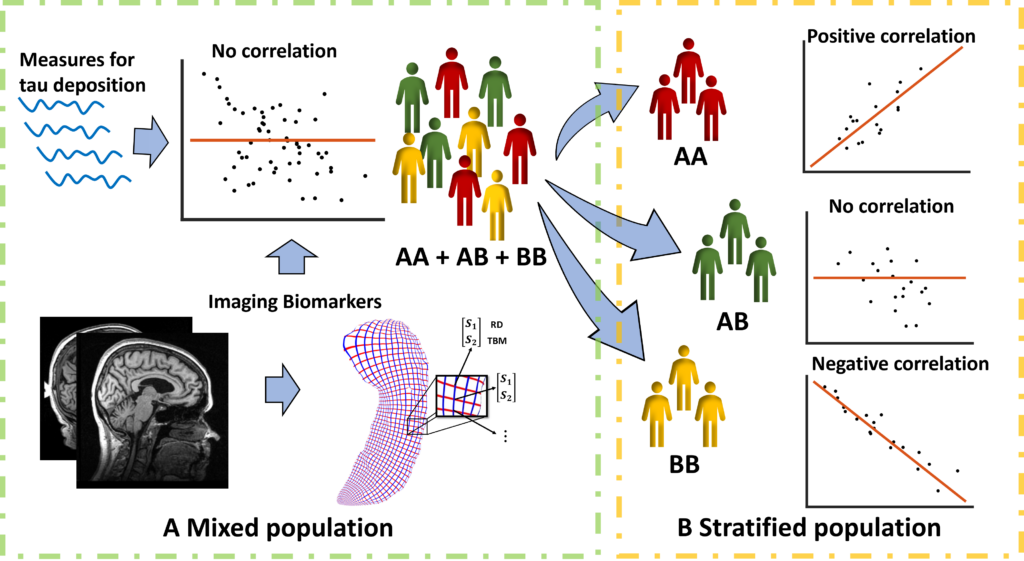Investigating the Effect of Tau Deposition and APOE on Hippocampal Morphometry in Alzheimer’s Disease: A Federated Chow Test Model
Jianfeng Wu, Yi Su, Eric M. Reiman, Richard J. Caselli, Kewei Chen, Paul M. Thompson, Junwen Wang*, Yalin Wang*
* equal contribution
Alzheimer’s disease (AD) affects more than 1 in 9 people age 65 and older and becomes an urgent public health concern as the global population ages. Tau tangle is the specific protein pathological hallmark of AD and plays a crucial role in leading to dementia-related structural deformations observed in magnetic resonance imaging (MRI) scans. The volume loss of hippocampus is mainly related to the development of AD. Besides, apolipoprotein E (APOE) also has significant effects on the risk of developing AD. However, few studies focus on integrating genotypes, MRI, and tau deposition to infer multimodal relationships. In this paper, we proposed a federated chow test model to study the synergistic effects of APOE and tau on hippocampal morphometry. Our experimental results demonstrate our model can detect the difference of tau deposition and hippocampal atrophy among the cohorts with different genotypes and subiculum and cornu ammonis 1 (CA1 subfield) were identified as hippocampal subregions where atrophy is strongly associated with abnormal tau in the homozygote cohort. Our model will provide novel insight into the neural mechanisms about the individual impact of APOE and tau deposition on brain imaging.
